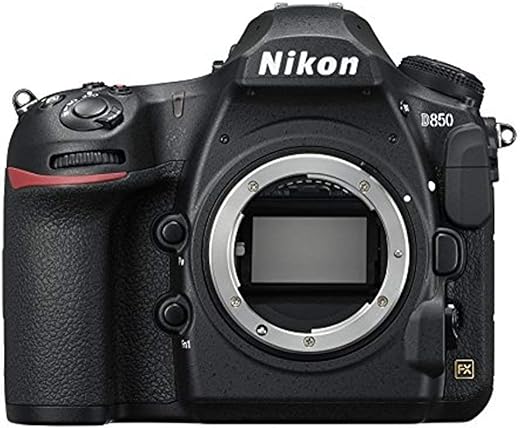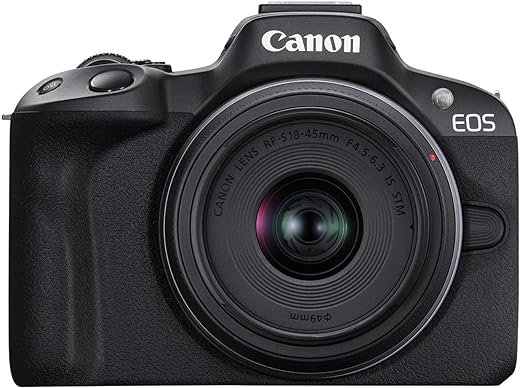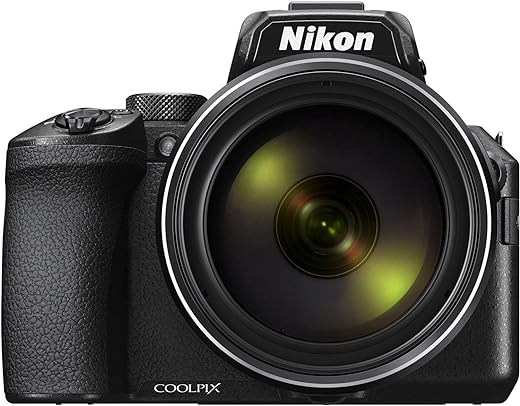When comparing the ‘Nikon D850’ and the ‘Nikon Z7II ‘, it’s essential to consider various factors that can influence your decision. From image quality and performance to features and price, we’ll delve into the details to help you determine which option suits your needs best. Let’s explore these two impressive Nikon products together.
Photography Excellence
The Nikon D850 FX-Format Digital SLR Camera Body features a powerful 45.7-megapixel BSI full-frame sensor for exceptional image quality with no risk of moiré. Capture up to 9 fps continuous shooting and enjoy advanced features like 4K video recording and a tilting touchscreen for versatile shooting options.
Professional Photography
The Nikon Z 7II Mirrorless Digital Camera Bundle includes the camera body and essential accessories. With fast subject acquisition, dual card slots, and a comfortable design, it offers a precise and reliable photography experience.
Nikon D850
Resolution
45.7 megapixels
Continuous Shooting
Up to 9 fps
Video Recording
4K Ultra HD video recording, slow motion up to 120 FPS at 1080p
Card Slots
Single card slot
Battery
Outstanding battery performance
Nikon Z7II
Resolution
Every little detail matters
Continuous Shooting
Subject acquisition with speed and precision
Video Recording
Not specified
Card Slots
Dual card slots (CFexpress/XQD + UHS-II SD)
Battery
Rechargeable Lithium-Ion Battery (EN-EL15c) with accessories
Nikon D850
Nikon Z7II
Nikon D850
Nikon Z7II
Side-by-side comparison


Nikon D850:
- USPs:
- Excellent battery life for extended shooting sessions.
- Wide dynamic range for detailed images in various lighting conditions.
- Pros:
- High-resolution sensor for sharp images.
- Extensive ISO range for low-light performance.
- Cons:
- Heavier body compared to mirrorless options.
- Slower continuous shooting speed.
- Use Cases:
- Landscape photography.
- Studio photography.
Nikon Z 7II:
- USPs:
- Advanced autofocus system for precise subject tracking.
- Compact and lightweight design for portability.
- Pros:
- High-speed continuous shooting for action photography.
- 4K video recording at 60p for smooth footage.
- Cons:
- Smaller selection of Z mount lenses compared to F mount.
- Shorter battery life compared to DSLRs.
- Use Cases:
- Travel photography.
- Videography.
Based on the comparison, the Nikon Z 7II emerges as the winner for its advanced autofocus system, high-speed continuous shooting, and 4K video capabilities. However, the Nikon D850 excels in battery life and dynamic range.
For users prioritizing portability and video features, the Nikon Z 7II is recommended. For those focused on high-resolution stills and extended shooting sessions, the Nikon D850 remains a strong choice.
Nikon D850 vs Nikon Z7 II: Choosing the Right Camera for You
Comparing Nikon D850 FX-format Digital SLR Camera and Nikon Z7 II Digital Camera
When comparing the Nikon D850 and Nikon Z7 II cameras, it’s essential to consider several key factors to make an informed decision. Here are some general guidelines and key factors to keep in mind:
Sensor and Resolution
- The Nikon D850 features a 45.7MP FX-Format BSI CMOS Sensor, while the Nikon Z7 II boasts a 45.7MP FX-Format BSI CMOS Sensor. Both cameras offer excellent image quality.
Lens Mount
- The Nikon D850 uses the F-mount system, compatible with a wide range of Nikon lenses.
- The Nikon Z7 II utilizes the Z-mount system, designed for Nikon’s mirrorless cameras and offering compatibility with the latest Z-series lenses.
Autofocus System
- The Nikon D850 has a 153-point autofocus system, ideal for fast-moving subjects and tracking.
- The Nikon Z7 II features a 493-point hybrid autofocus system, providing improved accuracy and speed, especially for eye and animal detection.
Image Stabilization
- The Nikon D850 lacks in-body image stabilization, relying on lens-based stabilization.
- The Nikon Z7 II incorporates 5-axis in-body image stabilization, offering superior stabilization for handheld shooting.
Size and Weight
- The Nikon D850 is a traditional DSLR camera, bulkier and heavier compared to mirrorless models.
- The Nikon Z7 II is a mirrorless camera, compact and lightweight, ideal for travel and outdoor photography.
EVF vs. Optical Viewfinder
- The Nikon D850 uses an optical viewfinder, providing a direct, lag-free view of the scene.
- The Nikon Z7 II features an electronic viewfinder (EVF), offering a digital preview of the image with real-time exposure adjustments.
Video Capabilities
- Both cameras offer 4K UHD video recording, but the Nikon Z7 II provides additional video features like 10-bit N-Log and RAW video output for enhanced post-processing.
Considering these factors will help you determine which camera best fits your needs and shooting preferences. Happy shooting!
Camera Comparison FAQs
Both the Nikon D850 FX-format Digital SLR Camera and the Nikon Z7 II Digital Camera are excellent choices for professional photography, each with its own strengths.
The D850 is a DSLR camera known for its high resolution (45.7 megapixels), robust build quality, and excellent battery life. It offers a wide array of compatible lenses and accessories, making it a versatile option for various shooting scenarios.
On the other hand, the Z7 II is a mirrorless camera that features a 45.7-megapixel sensor, in-body image stabilization, and a more compact design. It also boasts fast and accurate autofocus performance and improved video capabilities compared to the D850.
Ultimately, the choice between the two cameras would depend on your specific needs and shooting preferences. If you prioritize traditional DSLR features and a vast selection of lenses, the D850 might be the better choice. However, if you value the benefits of mirrorless technology such as a more compact design and advanced video capabilities, the Z7 II could be the preferred option.
When comparing the Nikon D850 FX-Format Digital SLR Camera Body to the Nikon Z 7II Mirrorless Digital Camera Bundle with FTZ II Mount Adapter, there are several advantages to choosing the Z 7II bundle. The Z 7II is a mirrorless camera, which typically offers advantages such as a more compact and lightweight design, faster and more accurate autofocus systems, and the ability to shoot in near silence. Additionally, the Z 7II features an electronic viewfinder, which can provide a more accurate preview of your shot compared to an optical viewfinder like the one on the D850. The Z 7II also offers newer technology and features, such as in-body image stabilization. Overall, the Z 7II bundle may offer a more modern and versatile shooting experience compared to the D850.
Both the Nikon D850 and Z7II are excellent cameras for portrait photography, each with its own strengths.
The D850 is a powerful DSLR known for its high resolution (45.7 megapixels), wide dynamic range, and excellent low-light performance. It also has a fast and accurate autofocus system, making it a great choice for capturing portraits with sharp details and beautiful colors.
On the other hand, the Z7II is a mirrorless camera that offers advantages such as a more compact and lightweight design, in-body image stabilization, and a high-resolution electronic viewfinder. It also has a 45.7-megapixel sensor like the D850, ensuring high-quality images for portrait photography.
Ultimately, the choice between the D850 and Z7II depends on your personal preferences and shooting style. If you prefer the traditional DSLR experience with an optical viewfinder, the D850 might be the better option. However, if you value a more compact and modern mirrorless design with in-body stabilization, the Z7II could be the right choice for you.
Certainly! The key differences between the Nikon D850 and Nikon Z7II bundle lie in their camera type and technology.
The Nikon D850 is a traditional DSLR camera, featuring a mirror mechanism and an optical viewfinder, while the Nikon Z7II is a mirrorless camera with an electronic viewfinder.
Additionally, the Nikon Z7II bundle comes with the FTZ II Mount Adapter, allowing you to use F-mount Nikkor lenses on your Z7II camera. This provides flexibility for photographers who already own Nikon F-mount lenses.
Both cameras have their own strengths and it ultimately depends on your specific needs and preferences when deciding between the Nikon D850 and Nikon Z7II bundle.
Yes, the lenses from the Nikon D850 can be used with the Nikon Z7II by utilizing the FTZ Mount Adapter included in the bundle. The FTZ Mount Adapter allows F-mount lenses, such as those from the D850, to be used seamlessly with the Z7II mirrorless camera. This compatibility provides flexibility and allows photographers to leverage their existing collection of lenses with the newer Z7II without any loss in quality.











7 thoughts on “Nikon D850 vs Nikon Z7II”
Video capabilities are important to me – how do these two cameras compare in video shooting?
I own a D850 and love it, but the Z7II bundle seems tempting for an upgrade! 📷
Could you provide more details on the differences in image quality between the two cameras?
I’m curious about the autofocus performance comparison between the D850 and Z7II.
I wish there was a side-by-side comparison chart to make the decision easier!
The bundle deal for the Z7II looks great, especially if it includes useful accessories.
Does the Z7II have any significant improvements in terms of low-light photography?
Comments are closed.